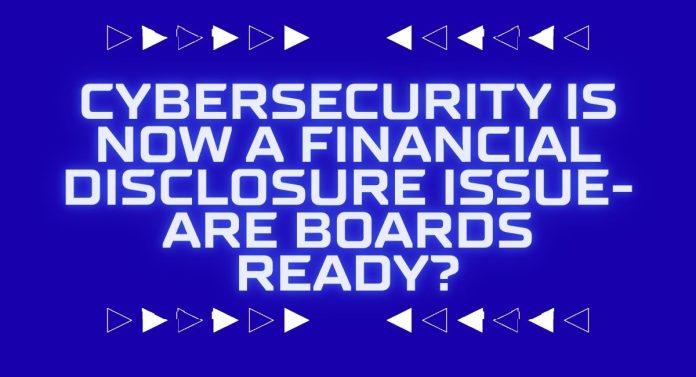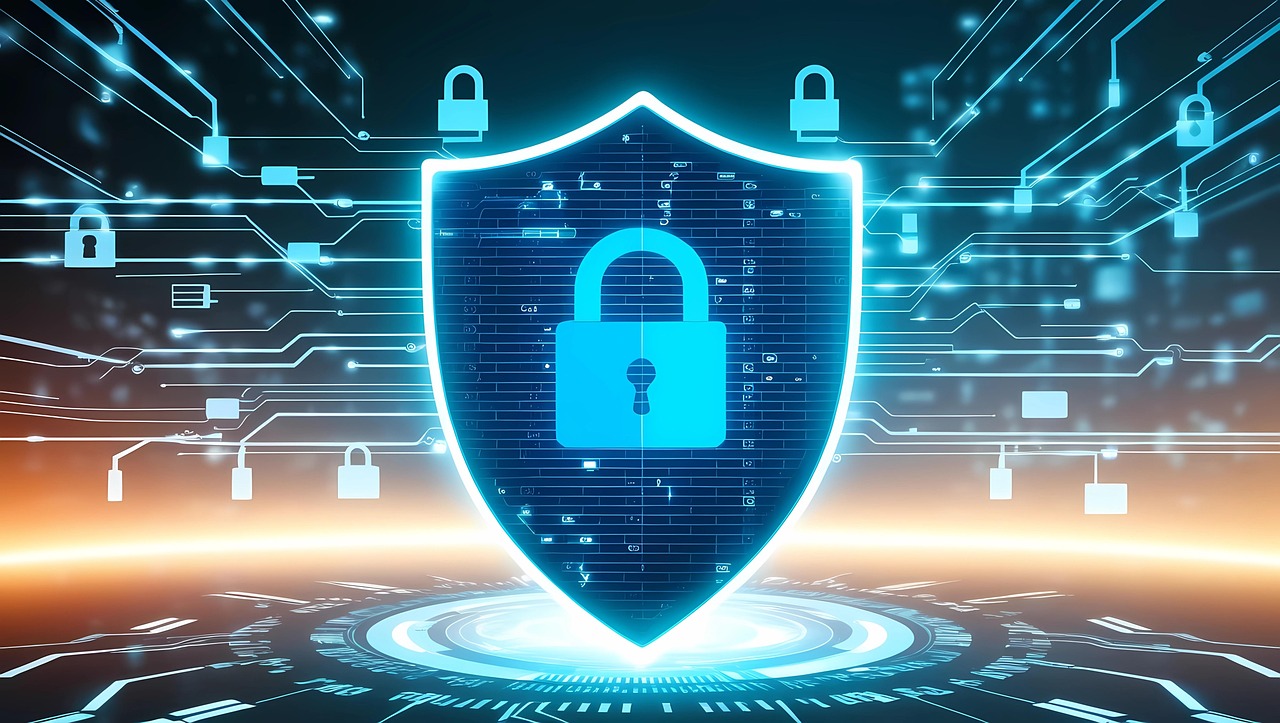In this post, I will discuss whether cybersecurity is now a financial disclosure issue: Are boards ready?
It’s no longer hackers in hoodies; it’s algorithms going to war. Picture this instead: your SOC team is just settling in for the day while, halfway across the world, an AI-fueled adversary spins up deepfake identities, fires off a spear phish, and probes your defenses in real time. Attacks like these are no longer rare; one attempt hits somewhere every 39 seconds. What once took weeks of manual reconnaissance can unfold in minutes.
Meanwhile, enterprises grappling with online privacy and cybersecurity threats are realizing that exposure now translates directly into financial risk. In the US, the financial fallout of a single material breach can easily exceed $10 million (IBM, Cost of Data Breach Report), accounting for fines, lost revenue, and reputational damage. For CISOs and boards, the real question is how quickly you can build AI cyber resilience when the assault comes at machine speed.
Table of Contents
The New Threat Reality: AI-Driven Adversaries
AI cybersecurity is reshaping the battle lines. A recent Darktrace report shows that 78% of CISOs say AI‑powered threats are having a significant impact on their organizations, a 5% rise from just one year earlier. Yet, only 60% of them feel adequately prepared to defend against these threats, highlighting a widening gap between the sophistication of threats and readiness. The pressure of managing online privacy and cybersecurity threats is prompting leaders to reassess how defensive investments translate into tangible protection.
Meanwhile, Deep Instinct’s 2025 “Threat Report” reveals that ransomware attacks surged by 30% year over year, with AI-generated phishing, using deepfake audio, video, and text, increasingly delivering crippling payloads. As organizations navigate evolving cybersecurity gateways and solutions, leaders are realizing that resilience requires both strategic alignment and trusted partners like Trigent Software.
That kind of scale and speed has become real. As one security leader shared during the forum, “compliance doesn’t equal safety anymore.” Adversaries are now utilizing tools like ChatGPT, DeepSeek, and Grok to automate phishing, generate deepfakes, and continually recalibrate their attack patterns in response to defensive feedback. This isn’t reconnaissance, it’s an AI-driven probing of your entire attack surface. Enterprises are now seeking cybersecurity gateways and solutions that can keep pace with adaptive attackers rather than react after the fact.
Conventional firewalls and static signature-based defenses simply can’t keep up with adaptive, AI-driven threats. But that doesn’t mean enterprises are powerless. Defenders are embedding AI into their own security platforms, including extended detection and response (XDR), identity threat detection and response (ITDR), and continuous exposure management, to anticipate and neutralize attacks in real-time. This shift, supported by partners such as Trigent Software, is helping organizations deploy adaptive controls, continuous risk scoring, and context-aware anomaly detection that evolve alongside attackers.
Cyber Resilience as Competitive Advantage
Leading enterprises are starting to treat cybersecurity as a competitive advantage. Stripe is a clear example: its AI-powered fraud-detection engine quietly screens millions of transactions in real-time, allowing the company to scale without eroding customer trust. More recently, Microsoft demonstrated how AI-assisted detection enabled it to identify and contain the Midnight Blizzard campaign targeting executive email accounts, underscoring that resilience in practice means detecting anomalies at scale before attackers can escalate.
The takeaway is clear: resilience in the AI era isn’t just about staying online after an incident. It is about utilizing intelligence-driven defenses to safeguard brand equity, maintain customer confidence, and provide the business with a competitive edge.
Executives are recognizing this shift. A recent ISG survey found that leaders are prioritizing data security and privacy over customer experience. Regulatory pressures are also rising: the SEC now requires incident disclosures within four days, CIRCIA mandates 72-hour reporting for critical infrastructure, and NIST CSF 2.0 raises the baseline expectations.
Boards are framing resilience as a fiduciary duty, which is another reason why many are evaluating modern cybersecurity gateways and solutions as foundational, rather than optional. To explore how modern enterprises are reframing cyber risk in the boardroom, you can also watch our Beyond the Stack episode here, where leaders dive into board-level takeaways.
Rationalizing the Security Stack
Large enterprises often operate dozens of disconnected tools, which drives up costs and complexity. In fact, a Ponemon Institute study found that organizations deploy an average of 45 security tools, yet only 53 percent of security leaders believe those tools meaningfully reduce risk.
More controls do not necessarily equate to a better defense. As CISOs know, tool sprawl can expand the attack surface, creating blind spots, integration gaps, and operational fatigue. The new mantra is KISLIME: Keep It Simple, Less Is More Effective. Many organizations now rely on strategic partners like Trigent Software to streamline architectures, strengthen detection, and eliminate redundancy.
Forward-leaning organizations are consolidating platforms, automating triage, and applying AI security solutions that deliver precision over noise. Metrics like MTTD (mean time to detect) and MTTR (mean time to respond) are now board-level KPIs. By aligning tools to business-critical risks, enterprises can prioritize where speed truly matters and measure resilience in terms that matter to shareholders.
Identity-First Security: The New Perimeter
In cloud-first, hybrid work environments, the network edge has dissolved, and identity has become the frontline. Zero trust, built on adaptive access, least privilege, and context-aware controls, is now a top priority in the boardroom. Gartner’s research shows that 85% of CEOs view cybersecurity services as critical to business growth, indicating that identity-first strategies are no longer just technical necessities but are central to enterprise value. The real challenge for organizations is to balance workforce productivity with airtight security.
AI-driven identity solutions are helping close the gap. By analyzing device posture, user behavior, and context in real-time, enterprises can defend against account takeover and lateral movement without creating friction that slows down business.
Why AI Still Needs Human Oversight
Even the most advanced SOCs recognize this: AI is now at the center of modern defense. From accelerating detection to orchestrating response, AI is a force multiplier that can shrink MTTD and MTTR dramatically. Extended detection and response (XDR) platforms, AI-driven threat intelligence, and automated incident response are giving defenders real advantages against machine-speed attacks.
That said, AI cannot carry the weight of accountability or judgment on its own. Boards are pressing harder on the right questions: Can the system explain its decisions? Is there hidden bias? And would those choices stand up under regulatory or legal scrutiny? This is why legal, compliance, and CISO teams are collaborating to ensure that AI security solutions are both practical and auditable.
Enterprises are also investing in workforce upskilling—training SOC analysts in AI-powered threat hunting, equipping executives to link cyber risk with financial impact, and educating staff to recognize shadow AI usage that could expose sensitive data. The future isn’t AI or humans; it’s AI plus humans, working together to build resilience at both the board and frontline levels.
Action Roadmap: Enterprise Strategies for AI-Powered Cyber Defense
For boards and CISOs looking to move from discussion to action, here are five pragmatic steps:
- Take Stock of Your AI Risk Posture: Go beyond traditional assessments; map not only internal AI use but also where third-party vendors, SaaS platforms, and contractors are embedding AI into their services. Identify shadow AI use across the supply chain and close monitoring gaps before attackers exploit them.
- Simplify and Strengthen the Stack: Cut overlapping tools that add noise, and double down on AI security solutions that shrink MTTD and MTTR. Every dollar should tie back to a material business risk.
- Design Around Identity First: Treat identity as the new perimeter. That means adaptive MFA, privileged access management, and real-time context checks that protect without slowing productivity. Add in Identity Threat Detection & Response (ITDR) to spot credential misuse and lateral movement, an emerging 2025 best practice.
- Blend Automation with Human Judgment: Let AI handle speed and scale, but keep people in the loop to ensure decisions are explainable, auditable, and defensible in front of regulators and insurers.
- Put Cyber Resilience on the Board Agenda: Frame resilience in terms that directors understand, financial impact, cyber insurance underwriting, and readiness to meet SEC disclosure requirements. Linking security posture directly to cost avoidance, insurability, and shareholder confidence keeps cyber firmly on the enterprise value agenda.
Build AI Resilience at Machine Speed
The arms race is on: AI vs. AI. Defending against machine-speed AI threats demands more than compliance checkboxes. It requires adaptive governance, rationalized security stacks, identity-first architectures, and human oversight to ensure that AI is aligned with enterprise values.
For North American enterprises navigating SEC disclosure rules, tightening cyber insurance underwriting, and relentless adversaries, one truth stands out: cyber resilience is no longer IT hygiene; it’s the currency of digital trust. Those who integrate AI into enterprise security strategy today will be the ones shaping the competitive landscape tomorrow.
Soubhik Chandaa
An experienced professional with over 15+ years of experience in the ITES industry. Throughout his career, he has developed a strong skillset in various areas of the industry, e.g., Service Desk, Endpoint & Cyber Security, Training, Transition & Operations Management, etc., allowing him to help organizations achieve their goals and grow their businesses.
INTERESTING POSTS
- Why Digital Resilience Is Key In An Uncertain World
- Why Circuit Boards Matter in Business Security
- Using Online Tools To Scout Future Employment Opportunities
- Why Cybersecurity Leadership Is the Future of Business Management?
- Building a High-Performance Team? These E-Books Offer Key Insights
- Breaking Barriers: A Conversation with Uma Pendyala on Women in Cybersecurity
About the Author:
Christian Schmitz is a professional journalist and editor at SecureBlitz.com. He has a keen eye for the ever-changing cybersecurity industry and is passionate about spreading awareness of the industry's latest trends. Before joining SecureBlitz, Christian worked as a journalist for a local community newspaper in Nuremberg. Through his years of experience, Christian has developed a sharp eye for detail, an acute understanding of the cybersecurity industry, and an unwavering commitment to delivering accurate and up-to-date information.









